June-bearing strawberries will send out runners, or stolons. Everbearing and day-neutral strawberries can also send out runners, though they’ll usually produce less, or none at all, depending on the variety.
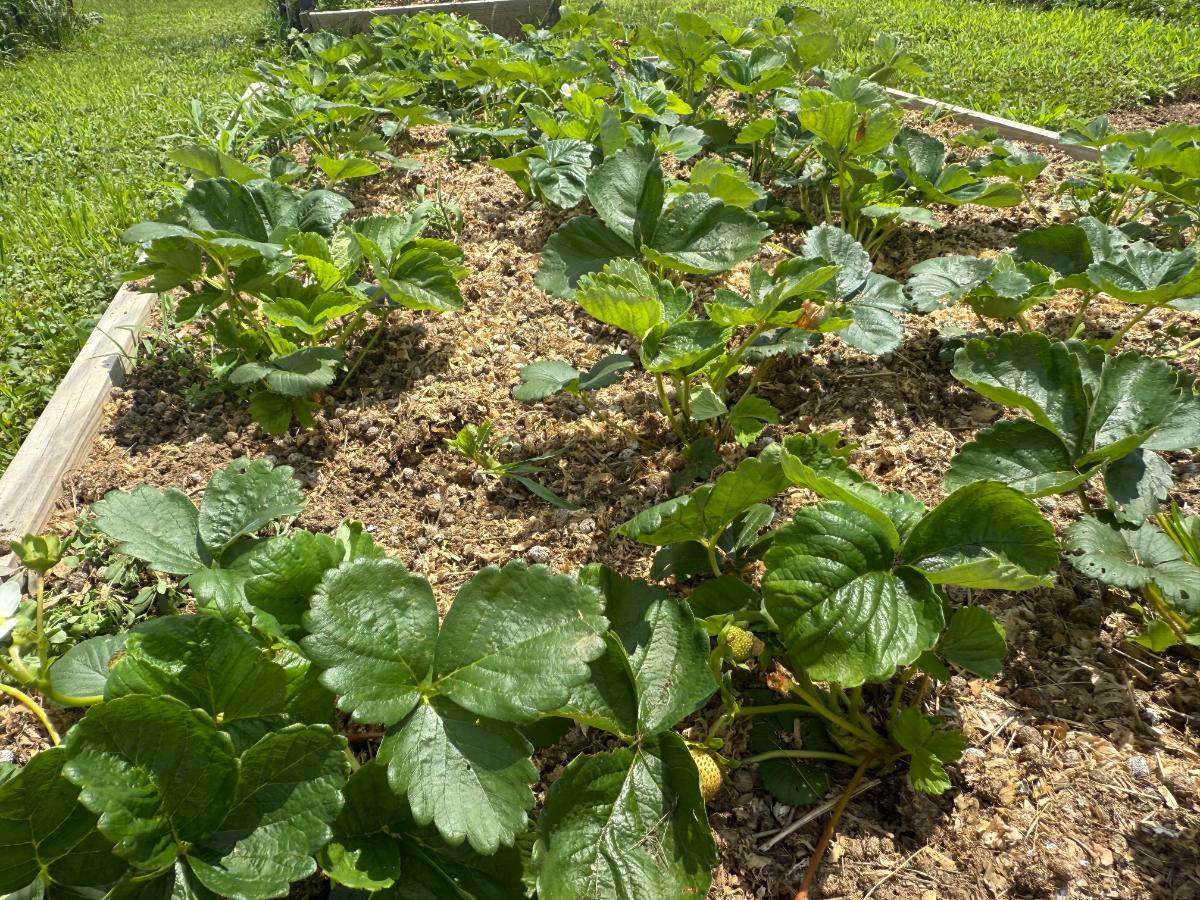
How you manage the runners that your strawberries send out will determine how well spaced, manageable, and maintained your new strawberry bed will be, and how healthy and productive it will be.
Jump to:
- Runners are Welcome in New June-Bearing Strawberry Beds
- What Are Strawberry Runners?
- Why Manage Strawberry Runners?
- Runners Make the ‘Matted Row’
- How Many Runners to Keep
- Rooting the Runners
- Rooting Excess Runners Outside of the Garden Bed
- What to Do With the Rest of the Runners
- Runner Management is Different for Day-Neutral and Everbearing Strawberries
- Good Strawberry Runner Management Sets the Stage for Strong Strawberry Beds
Runners are Welcome in New June-Bearing Strawberry Beds
Though runner management may seem overwhelming at first, it is actually quite simple, and not too hard to do, either.
You only need to learn a few simple rules to know how to manage the runners that grow in your strawberry bed.
In fact, runners are a welcome thing in your new strawberry bed. They are the plants’ way of naturally propagating and proliferating, and continuing their existence. They are also the way by which you will complete your June-bearing strawberry patch.
Well-managed runners will give you the best and fullest strawberry bed you can have. They will increase your plant and berry production by about four to five times more than the parent plant alone.
We want runners in our strawberry beds. Runners are a good thing!
What Are Strawberry Runners?
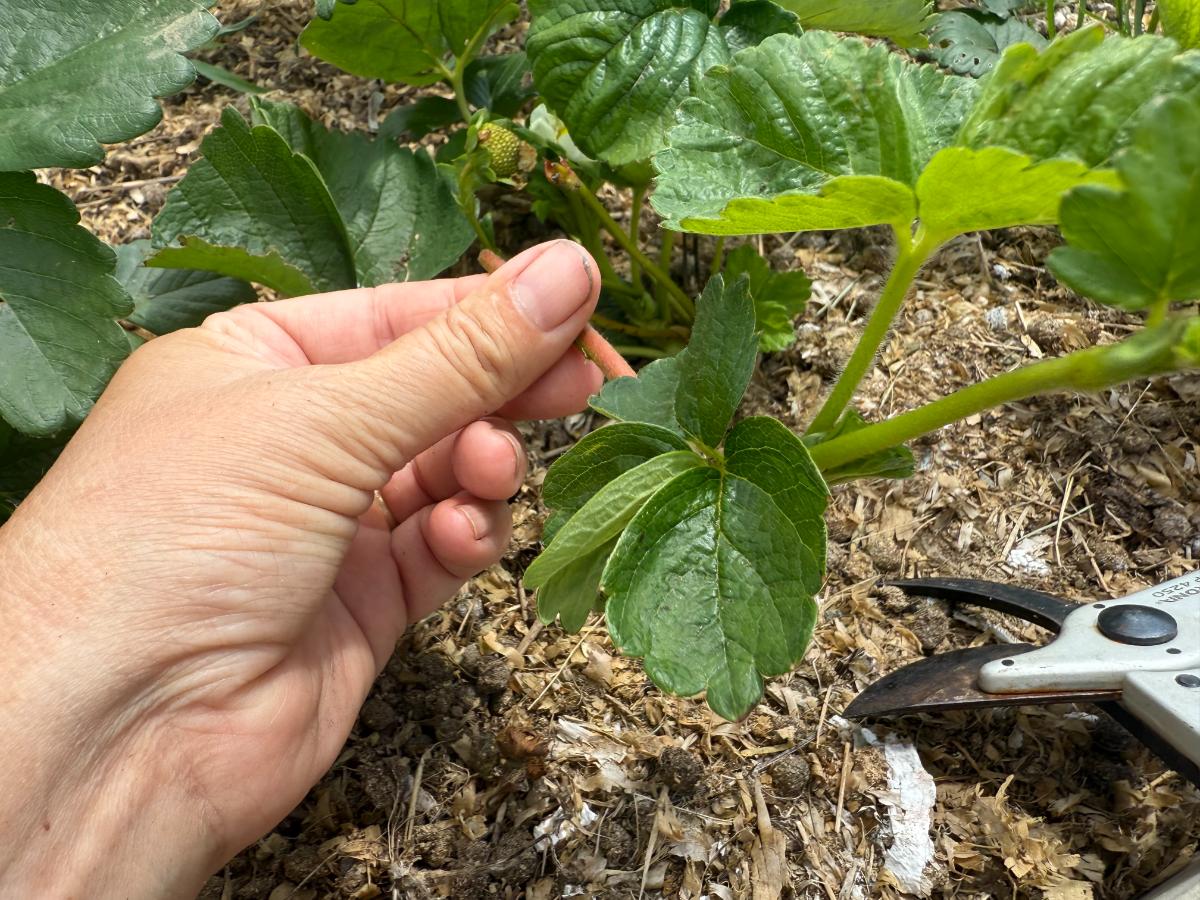
Runners are stems that are sent out from the parent plant to form new plants. “Runner” is the common name for stolons, which are what strawberry runners technically are.
Runners, or stolons, are stems that grow horizontally above the soil, along the surface of the ground. They will grow to be about eight to ten inches long (give or take), and then they will develop a tiny new strawberry plant at the end.
The new plant will not have any roots nor any ability to support itself (food and water) at first. They pull their moisture and nutrients from the parent plant. Then, often in response to soil contact, the new plant will begin to grow small roots and reach for the ground.
With these new roots, the strawberry plantlet will establish itself and eventually become an independent plant.
Why Manage Strawberry Runners?
Strawberry runners need to be managed because, although they are the plant’s way of propagating itself, producing them takes a lot away from the parent plant.
Allowing all the runners to remain on a parent plant can stifle the original plant.
This can result in lower yields, fewer berries, and smaller fruit.
Strawberry runners also need to be managed because if too many of them root, your strawberry patch will be far too crowded. The soil will be taxed trying to provide enough water and nutrients, as all the plants will compete with each other.
The resulting patch will also have plants that are too close together, which impedes good airflow. Limited airflow is a top cause of fungal diseases on strawberry plants and fruit.
Good management of runners is a combination of leaving just enough to grow the patch and removing enough to stop the draw on the parent plant and prevent overcrowding in the bed, and the conditions that result from it.
Runners Make the ‘Matted Row’
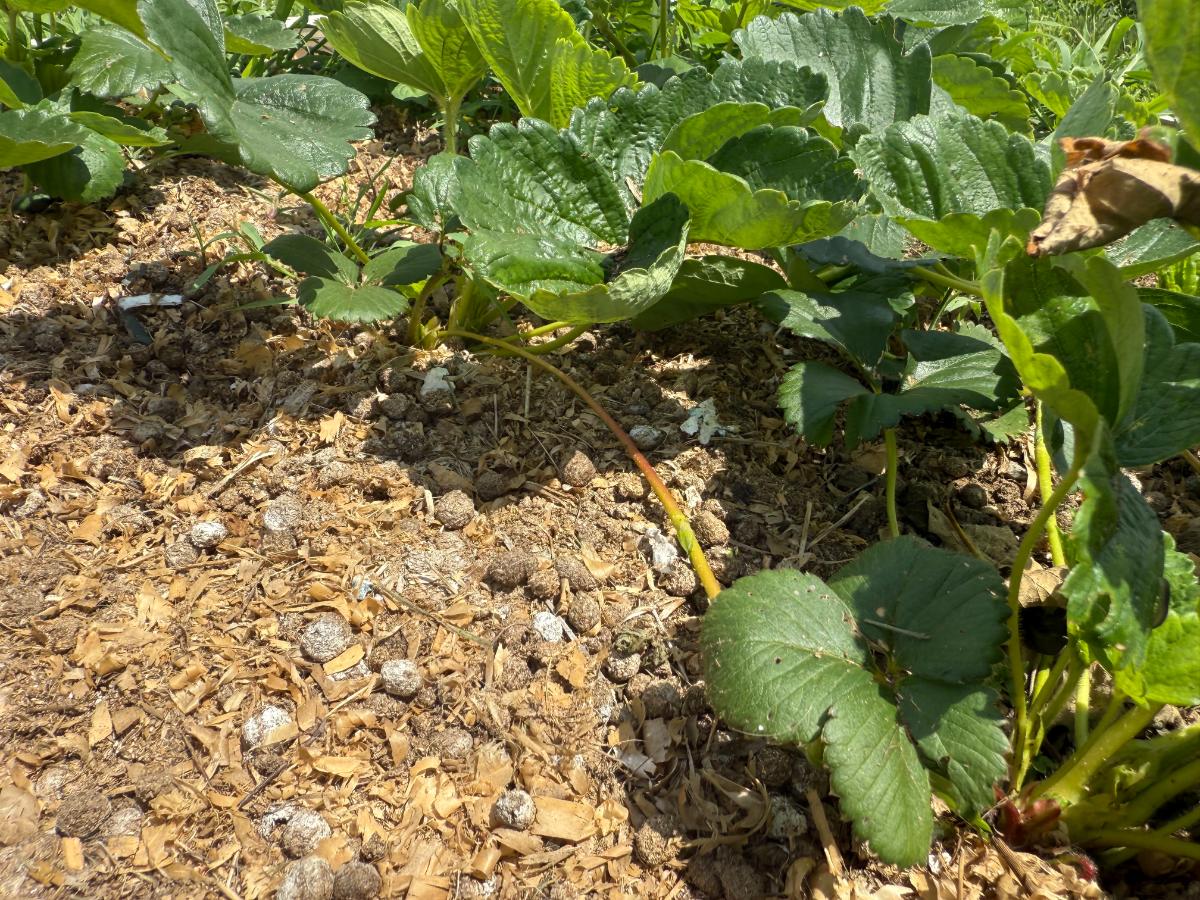
Runners are how June-bearing plantings create the matted row. Matted rows start out as single plants that are allowed to set some runners to root. The daughter plants fill in the bed so that the soil is covered almost completely, without overcrowding.
That single original plant will become five total plants in your bed. The goal is to have a row or bed that is 18 to 24 inches wide, with spaced aisles in between for easy reach. This allows you to maintain and harvest the patch well.
How Many Runners to Keep
The key is to find the right balance to build the bed without weakening any plants.
The way to do this is to let the first runners root, and then remove any new runners after that. This keeps the late runners from drawing down and crowding out the resources of the bed.
- Let the first four runners from each plant develop into plantlets
- Remove all runners after the first four
Rooting the Runners
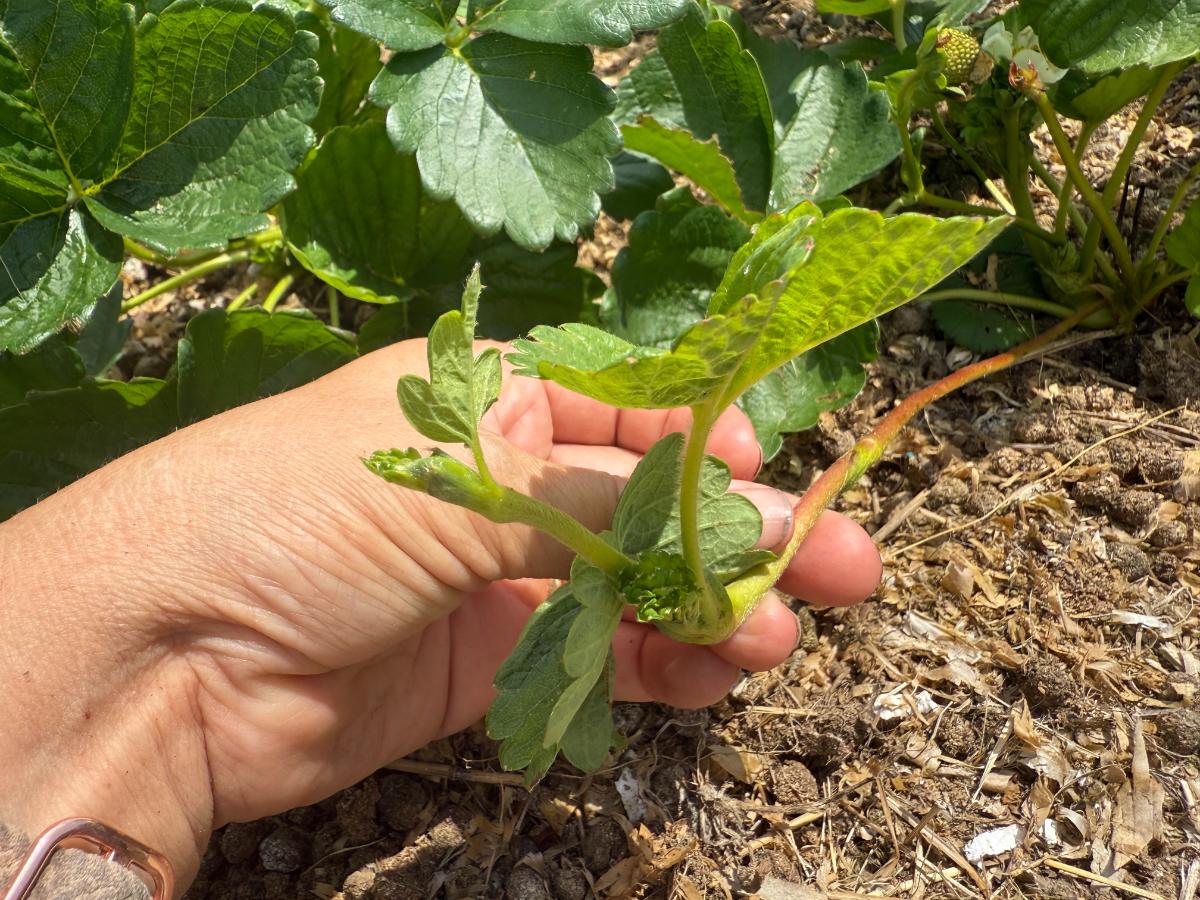
Once the runners are set, direct them to where you want the plants to fill in the patch. This will allow you to maintain a good, manageable shape to your rows, to root the plants spaced away from the other plants and runner plants, and to maintain good air circulation.
What’s left now is to let the runners root. They will usually take care of this on their own, but there is a good way to help them along.
- Move the runners and set the plantlets where you want them to root and grow
- Set the bottom of the plant on top of the soil (you do not need to dig any holes)
- Use a small landscape staple or something like a bent piece of wire or a bent large paper clip
- Place the “staple” over the runner without piercing through it
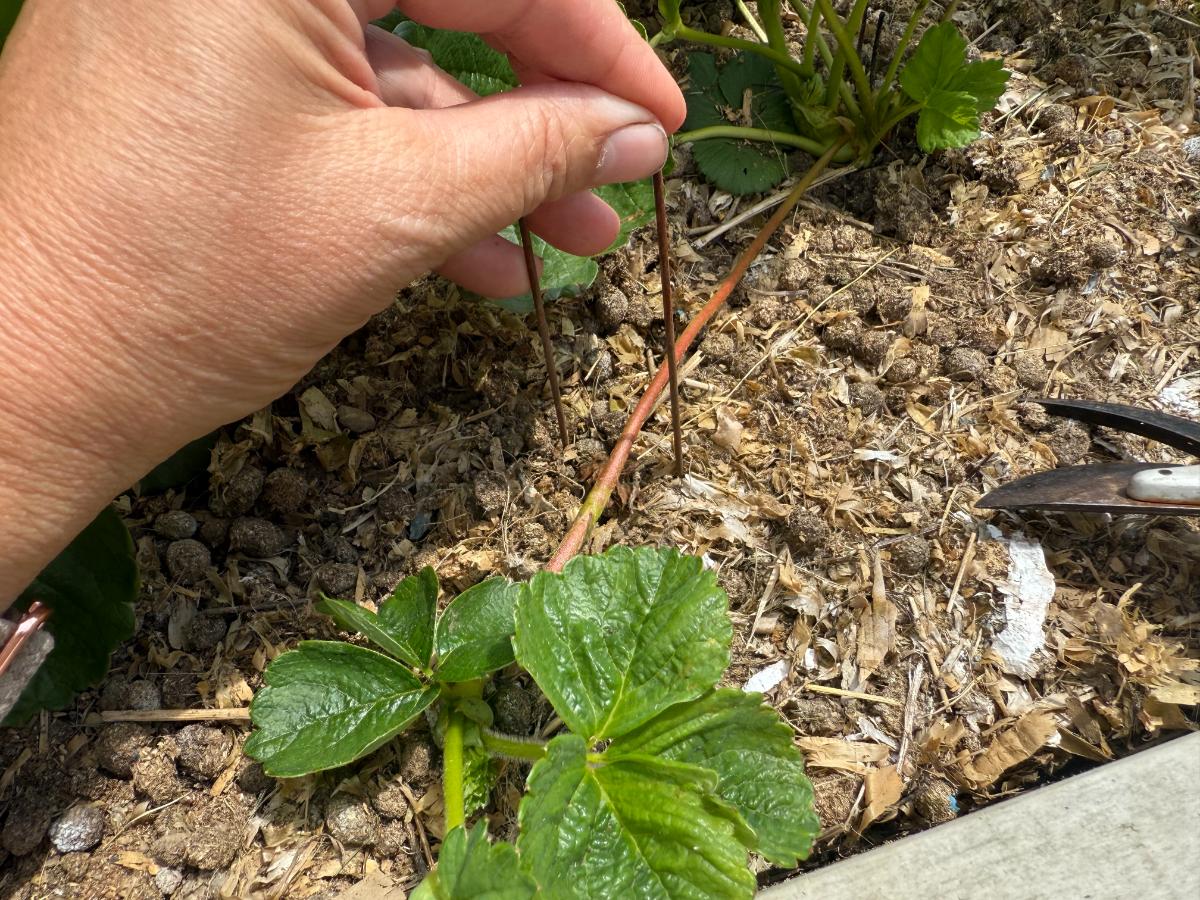
- Place the staple near the plantlet, straddling over the runner stem
- This will hold the plantlet down close to the soil
- Moisture and soil contact will stimulate the plant to root
- Once it is firmly rooted, if the runners do not die back themselves, you can snip them with nippers or small scissors; only do this after the roots have firmly set and rooted in the soil
- Maintaining good moisture speeds rooting and supports all your strawberry plants
- The bed should get between one and two inches of water per week, whether that comes from rain or from you
- After four plantlets have set and rooted, cut all remaining runners and any new ones that develop
Rooting Excess Runners Outside of the Garden Bed
If you want more strawberries to fill in spaces or to use to start another row or bed, you can allow some of the extra late runners to grow into plants and then use them as transplants for the new space.
Though this is a bit more of a draw on the parent plant, if you cut the extras off soon after they root, it will give the plant time to rebound and grow.
You can let an extra one or two runners develop for transplants.
- When the plant sends out another runner and plantlet, place a small pot of moist potting soil under the plantlet
- Use the same staple or clip method as outlined above to hold the plantlet down in contact with the pot of soil
- The plant will root the same as it will on the ground, just in the pot — it will already be planted for you!
- Once the transplant roots in the pot of soil, you can cut the runner from the parent plant
- Make sure to keep the pot of soil moist so the roots will develop
- Pots will dry out faster than the ground, so even though they are in a watered bed, you may need to give some extra water to the pots in between waterings
To avoid overcrowding, these new plants should move elsewhere and not be allowed to root too closely in the bed.
What to Do With the Rest of the Runners
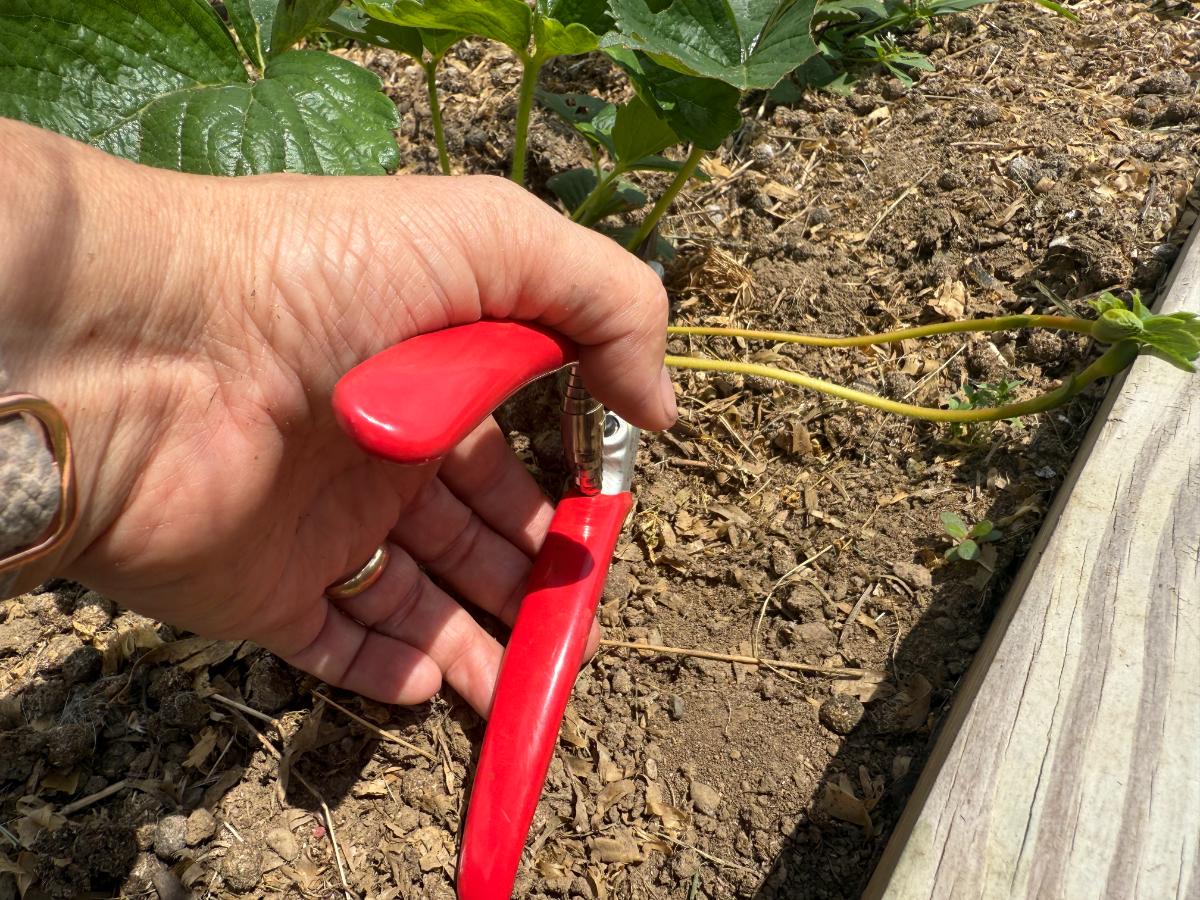
After you’ve rooted runners to fill in the bed, and after you’ve allowed any transplants that you want to root, continue to cut all the rest of the runners that show up. They should slow down and stop as the season goes on, but they should be cut away.
Runner Management is Different for Day-Neutral and Everbearing Strawberries
Day-neutral and everbearing strawberry plants don’t tend to produce many runners. Some plants won’t produce any at all. These plants put more energy into continuous flowering throughout the season, and produce until the end of the season when fall frosts end production.
You should cut all the runners off everbearing and day-neutral plants. (Though if you want to root a few into transplant pots, you can do that, but try to keep it to one or two per plant.)
Be sure to cut the runner stems as soon as the plantlets root.
Everbearing and day-neutral plants should be planted close enough for the plants to grow large and not rely on runners to fill them in (especially because runner production is unreliable in everbearing/day-neutral types). So any runners they do send out should be removed.
Good Strawberry Runner Management Sets the Stage for Strong Strawberry Beds
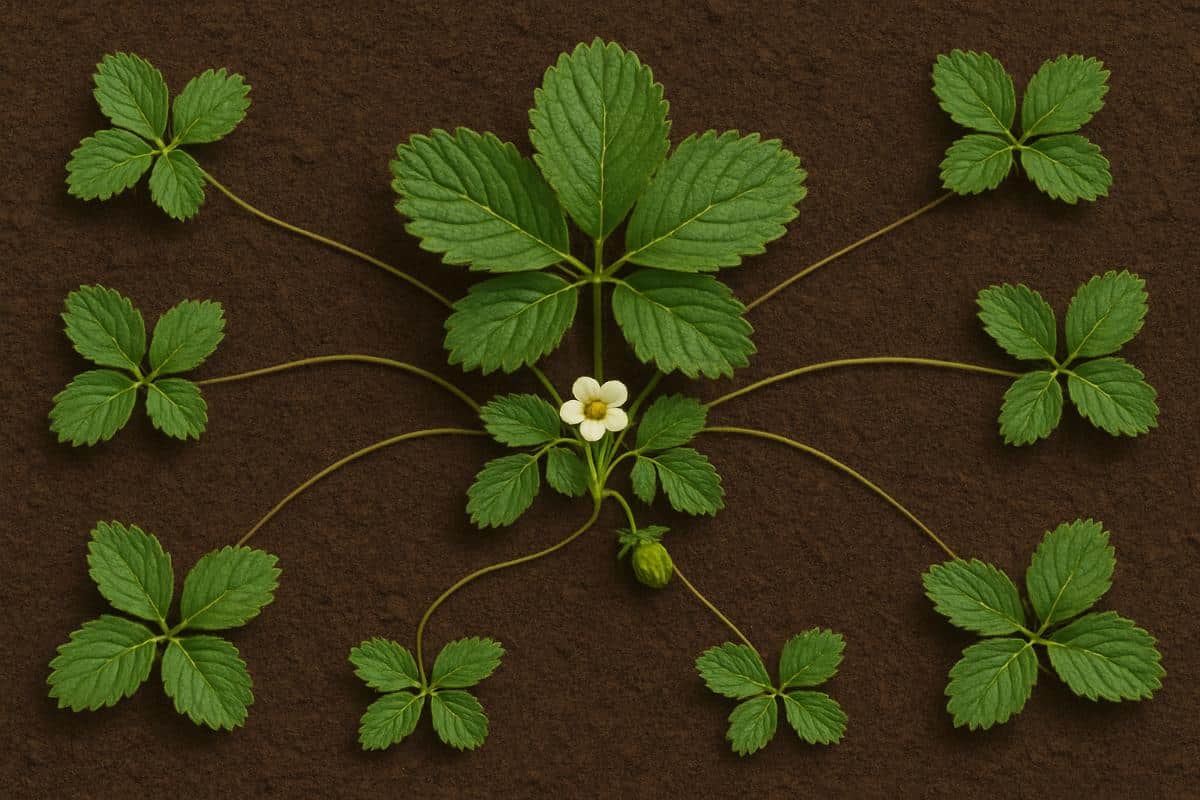
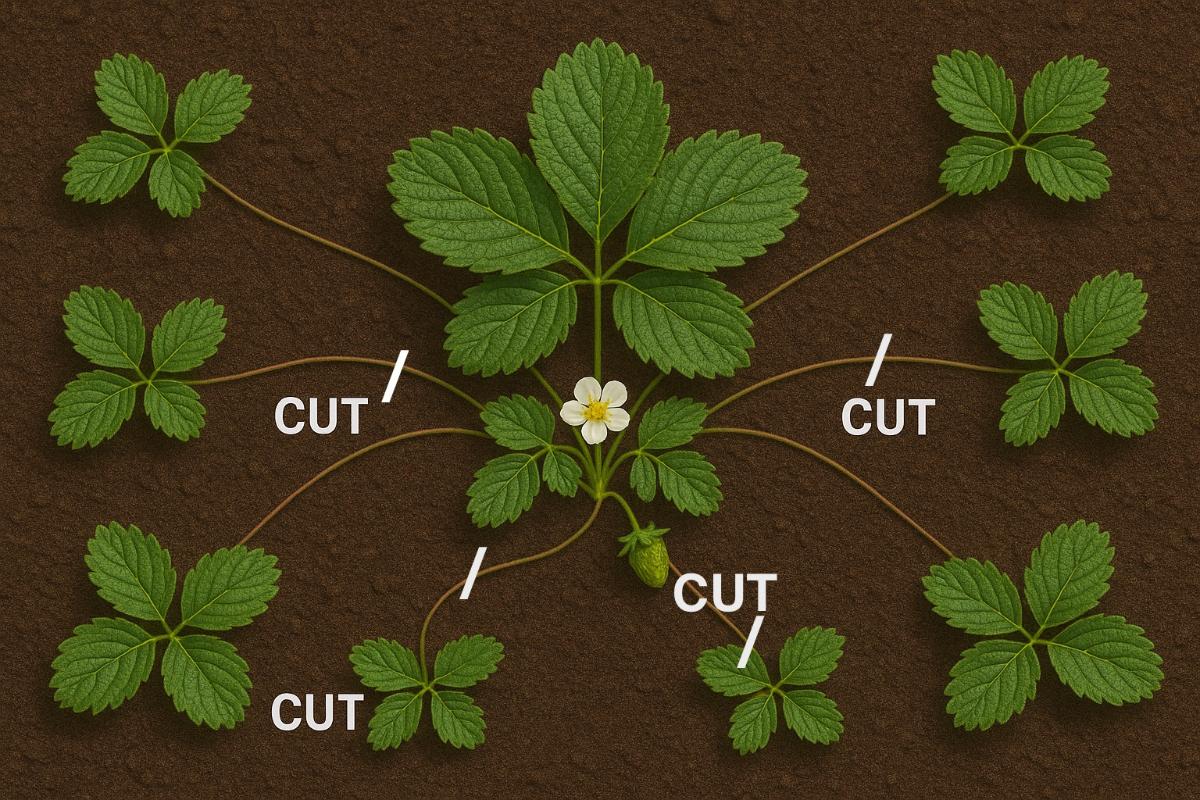
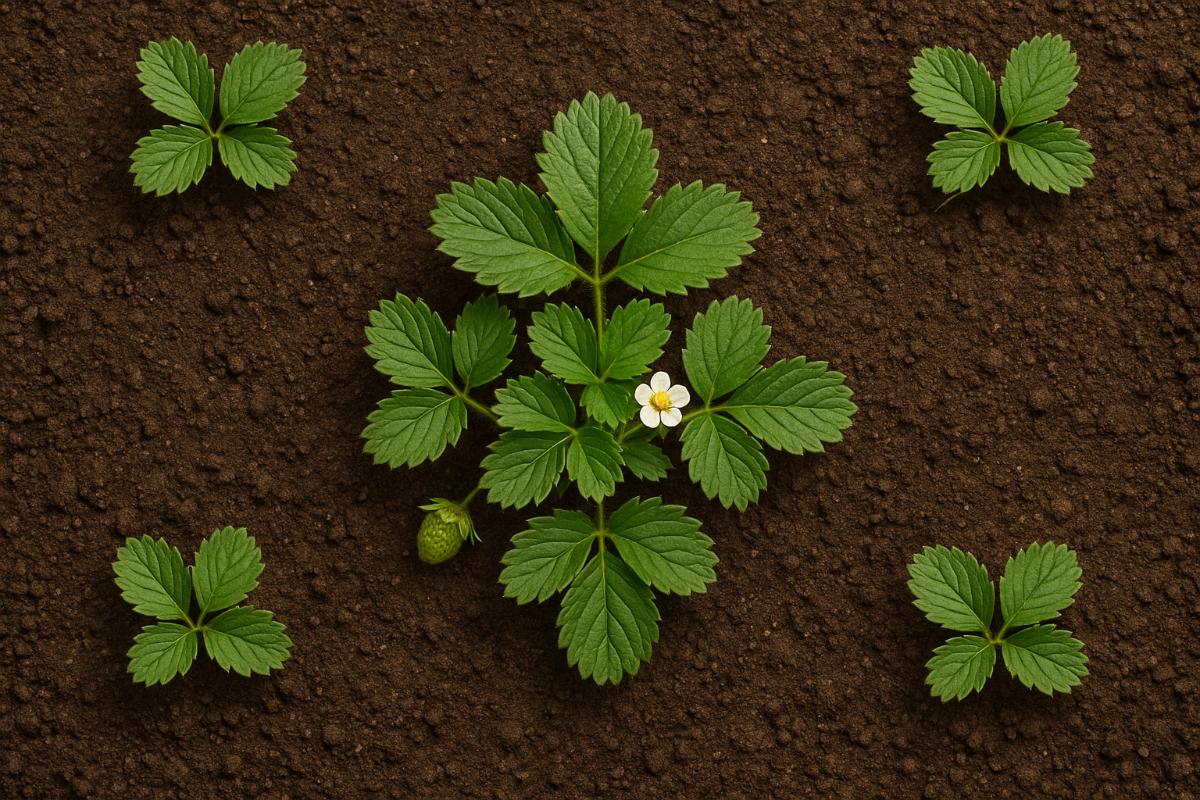
A bit of work setting up strawberry runners will go a long way toward building a strong, productive, high-yielding strawberry bed. Done right, the bed will last you for up to five years and will provide you with plenty of berries for your eating, preserving, and canning pleasure.


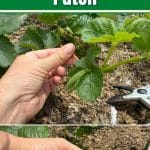
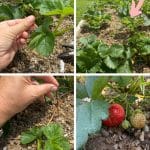
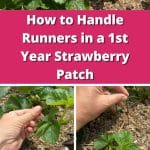
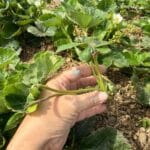

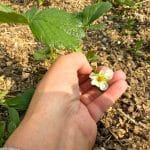

Leave a Reply